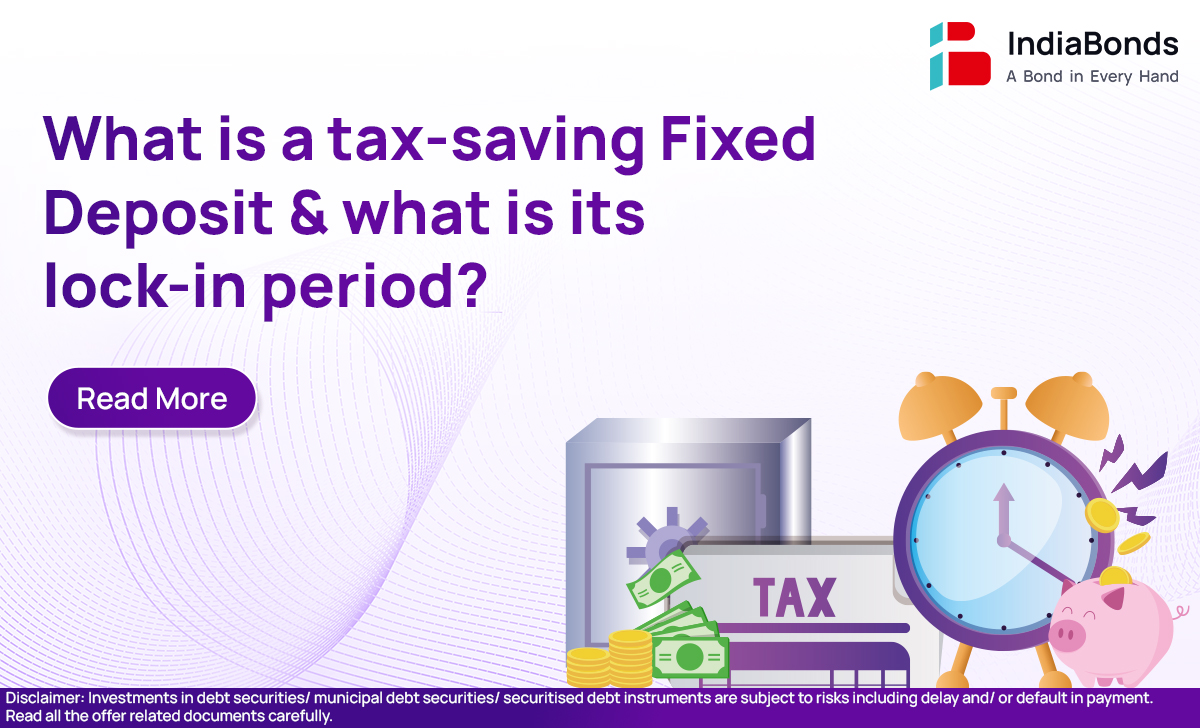
Let’s be real for a minute—tax season can feel like a whirlwind. Everyone’s suddenly talking about 80C deductions, investment proofs, and last-minute deposits. If you’ve ever wished there was one simple, no-fuss way to save tax, a tax-saving fixed deposit might just be your answer.
It’s straightforward. It’s safe. And best of all? You don’t need to be a finance expert to understand it.
If you’ve ever opened a regular FD, you already get the basic idea. A tax-saving FD works the same way—you put in a lump sum of money and earn interest over time.
The key difference? With this type of FD, you can claim a tax deduction of up to ₹1.5 lakh under Section 80C of the Income Tax Act. So not only does your money grow, but it also helps bring down your taxable income.
The only catch? It comes with a lock-in period of 5 years. That means once you invest, you need to let it sit tight for the full term. No breaking it midway, even if you really need the money.
You choose a bank. You invest a lump sum amount. And for the next 5 years, that money earns interest at a fixed rate decided by the bank.
Unlike mutual funds or stocks, there are no surprises. You know exactly how much you’re getting at the end. That’s the charm of fixed deposits.
But here’s something important—the interest you earn is taxable, even though the investment amount itself gets you a tax break under Section 80C. So while you save tax upfront, keep in mind that the interest earned will be added to your income at the end of the year.
Because it’s simple. No market ups and downs, no monitoring your investment every week. Just invest and forget.
Here’s why it works for a lot of people:
It’s not flashy or high-return—but it’s solid, and that’s what makes it appealing.
If you’re someone who likes to keep things straightforward, this is for you. Especially if:
Even senior citizens often consider tax-saving FDs, although there might be better options like SCSS if they want regular income.
Let’s say you have ₹1.5 lakh to invest for tax-saving. Should you put it in a tax-saving FD or something else? Here’s a quick look:
| Investment Option | Lock-in Period | Returns | Risk Level |
| Tax-Saving FD | 5 years | 6 to 7.5% | Low |
| ELSS Mutual Funds | 3 years | Market-linked | Moderate to High |
| Public Provident Fund | 15 years | Around 7.1% | Low |
| National Savings Certificate | 5 years | Around 7.7% | Low |
If your priority is fixed returns and zero market risk, the tax-saving FD is a safe choice. If you’re okay with short-term ups and downs for better returns, ELSS might work better. But for peace of mind? FDs win.
Before you put your money into a tax-saving FD, here are some small but important points:
So invest only if you’re sure you won’t need that money in the short term.
It’s 5 years. During this time, you cannot withdraw or close the FD.
No, early withdrawal is not allowed. This is what makes it eligible for the 80C tax benefit.
Again, the lock-in period is strictly 5 years. It applies to all tax-saving FDs.
You cannot. These FDs are designed to stay locked for 5 years to qualify for tax deduction. No exceptions.
A tax-saving fixed deposit isn’t the most glamorous investment out there, but it does exactly what it promises. It saves you tax. It keeps your money safe. And it gives you guaranteed returns over five years.
If you’ve got extra money lying around before the financial year ends, and you’re tired of complex options, this could be your go-to choice.
Just remember to check the interest rates offered by different banks and only invest an amount you’re comfortable locking away for 5 years.
Sometimes, simple is smart. And in the world of tax saving, this is one of the simplest moves you can make.
Disclaimer : Investments in debt securities/ municipal debt securities/ securitised debt instruments are subject to risks including delay and/ or default in payment. Read all the offer related documents carefully.